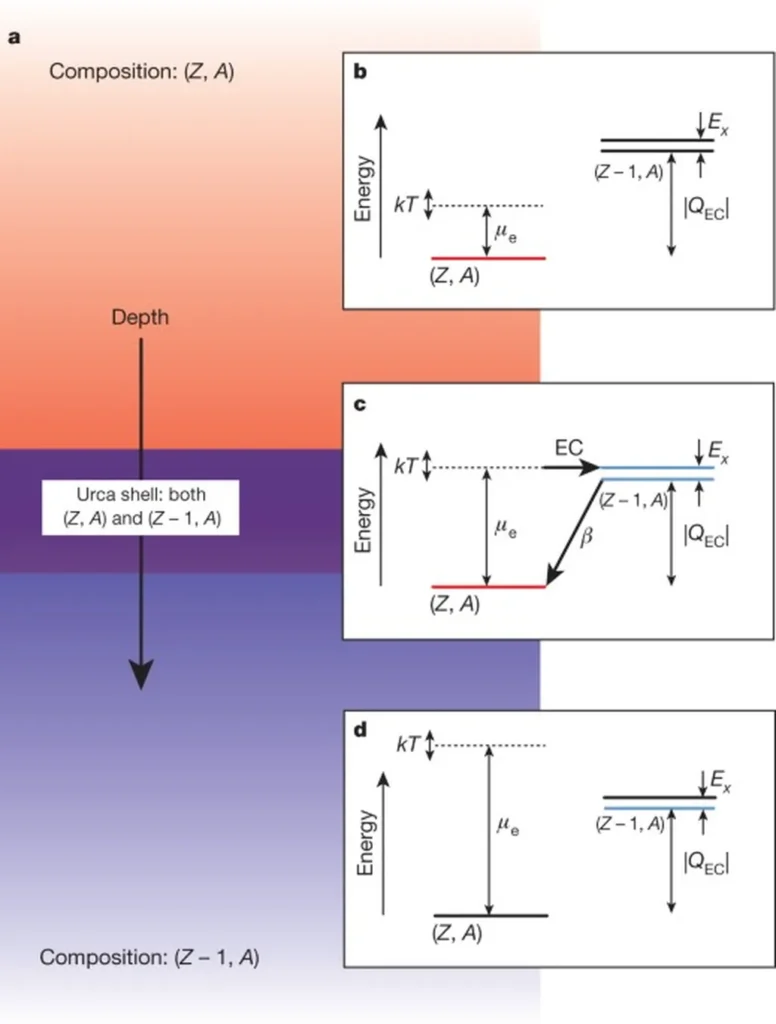In the realm of astrophysics and energy research, understanding the cooling mechanisms of neutron stars can provide valuable insights into the fundamental processes governing these dense, exotic objects. Researchers Yoonhak Nam and Kazuyuki Sekizawa, affiliated with the National Astronomical Observatory of Japan and Kyoto University respectively, have delved into the intricate interplay between vortex creep heating (VCH) and direct Urca (DUrca) cooling processes in massive neutron stars. Their findings, published in the esteemed journal Physical Review D, offer a nuanced perspective on how these mechanisms influence the thermal evolution of neutron stars, with potential implications for our understanding of energy dissipation in extreme astrophysical environments.
Neutron stars, the remnants of massive stellar explosions, are known for their intense magnetic fields and rapid rotation. As they age, these stars can exhibit significant thermal brightness, suggesting the presence of internal heating mechanisms. Among these, vortex creep heating (VCH) stands out as a robust process linking the star’s spin-down with frictional dissipation in the superfluid crust. However, the interplay between VCH and DUrca cooling, a process that facilitates rapid cooling in massive stars, has remained largely unexplored until now.
Nam and Sekizawa’s research implements VCH in a cooling code and validates its application. They identify the physically consistent domain where the steady-state form of heating, denoted as L_h = J|Ω̇_∞|, applies. The study quantifies how magnetic field strength (B) and initial spin period (P_0) regulate observable VCH signatures under DUrca cooling. Additionally, the researchers introduce a 3D representation that resolves degeneracies hidden in standard 2D projections, providing a more comprehensive understanding of the cooling processes.
The cooling computations were performed using the BSk24 and APR equations of state, standard pairing gaps, and iron/carbon envelopes. VCH was modeled with a specific range of parameters, and a quantum-creep coverage fraction f_Q(t) was used to diagnose when steady-state heating is valid. The researchers surveyed a range of magnetic field strengths and initial spin periods for neutron stars with masses of 1.4 and 2.0 solar masses, comparing their findings with a curated set of ordinary pulsars with measured spin periods and spin-down rates.
The results of the study reveal several key insights. Firstly, the implementation of VCH reproduces previously published VCH bands, confirming the consistency of the model. Secondly, the validity boundary for magnetic field strength and initial spin period follows magnetic-dipole spin-down, further validating the consistency with spin-down rates. Thirdly, the combination of DUrca cooling and VCH can maintain surface temperatures of around 100,000 Kelvin for magnetic field strengths greater than 10^11 to 10^12 Gauss and initial spin periods up to approximately 100 milliseconds. Lastly, the 3D representation shows that sources appearing coincident in time and surface temperature occupy distinct magnetic field layers, removing degeneracies in the data.
The practical implications of this research extend beyond astrophysics. Understanding the energy dissipation mechanisms in neutron stars can provide valuable insights into the fundamental processes governing these extreme environments. The study’s findings highlight the importance of considering magnetic field strength and initial spin period as co-equal factors in cooling analyses, offering a more nuanced approach to studying the thermal evolution of neutron stars. This research was published in Physical Review D, a leading journal in the field of theoretical and particle physics.
This article is based on research available at arXiv.

